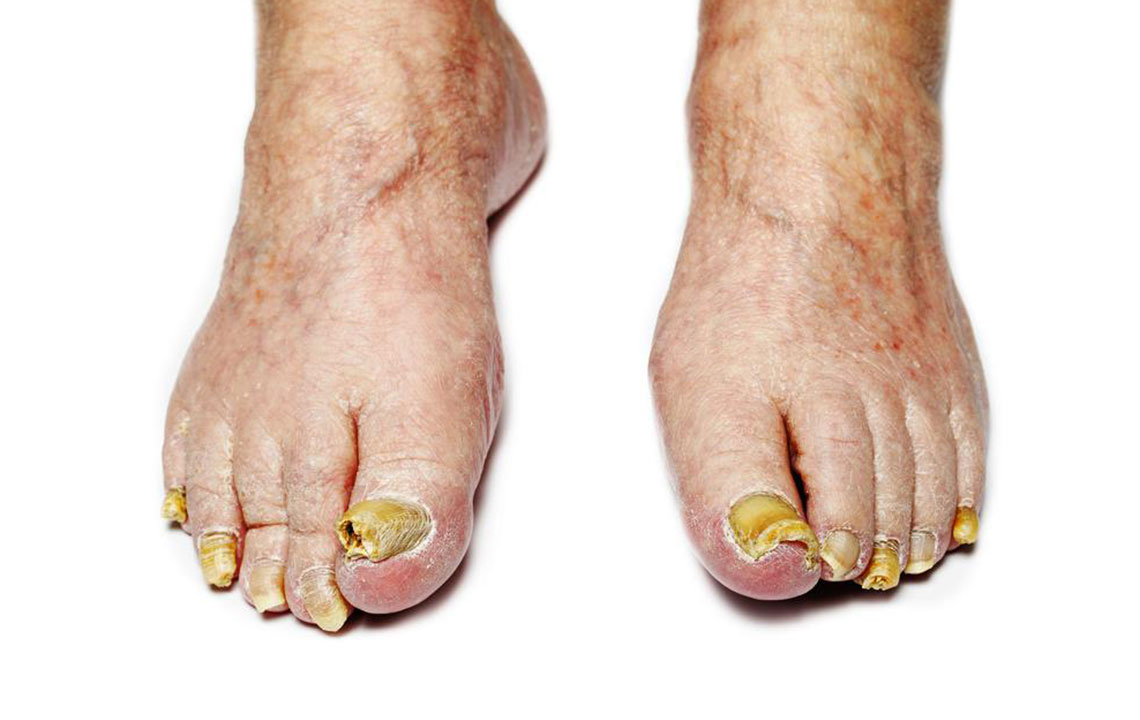Understanding Causes and Symptoms of Nail Fungus
Onychomycosis, also known as tinea unguium or nail fungus, is a problem most people face sometime in their lives. This is a fungal infection that takes place in the fingernails or toe nails. Nail fungus causes swelling, inflammation, thickening, yellowing and crumbling of the nail. While nail fungus isn’t that painful, there are some cases where it can be so.
Causes of Nail Fungus
Nail Fungus is caused primarily due to a fungal infection. However, here are a few other factors that cause nail fungus.
- Abnormal pH levels of your skin can cause nail fungus since fungi and certain bacteria tend to thrive under abnormal pH levels.

Symptoms Of Nail Fungus
Nail fungus can affect the entire nail. There are rare cases where it only has an impact on a part of the nail. If you are extremely unlucky, your other nails can get infected as well.
These are the symptoms of nail fungus:
- Subungual Hyperkeratosis, this is scaling under your nail
- The tip of your nail or the corners of your nails will begin to crumble. This is called distal onychomycosis.
- Visible yellow or white streaks or lines across the nail. This is known as lateral onychomycosis.
- White areas on the nail that flake and cause pits on the surface of the nail.
- The appearance of proximal onychomycosis, which are yellow spots at the bottom of the nail.
- The nail might lift off from the nail bed, be loosely attached. This can fall as well.
- In some cases, you will find an odor coming out from the infected nail.
- The nail tends to be thickened or brittle.
- When the nail fungus has reached its peak, the entire nail falls off.
Tips On How To Get Rid Of Nail Fungus
Apple Cider Vinegar
Mildly acidic, apple cider vinegar kills bacteria and fungi and helps prevent nail fungus from spreading. To use this on your nail, mix apple cider vinegar with equal parts of water and soak your nails in this solution for about 30 minutes every day. After this, make sure you dry your nails thoroughly. You can also mix a little rice flour with apple cider vinegar and use it as an antifungal exfoliating scrub. Apply this paste on the nail that is affected, and gently scrub the nail. This will also help remove dead skin cells.
Baking Soda
Baking soda is an excellent ingredient in treating infections. It is an inexpensive and easily available ingredient that is found in almost every kitchen. Baking soda also helps neutralize foot odor. Add half a cup of baking soda, a full cup of hydrogen peroxide, and a few spoons of Epsom salt. Soak the infected area for about thirty minutes in this solution. Wash your feet after this and dry it with a clean cloth. Do it daily for good results.
Mouthwash
Mouthwash kills germs and bacteria in the mouth and removes bad odor. This can be used to treat nail fungus too. Made with compounds that kill fungus and bacteria, mouthwashes also have alcohol, which acts as an excellent antiseptic, keeping away fungi and other harmful bacteria. Add equal parts of Listerine to water, and soak the infected area for 30 minutes. Scrub the fingernail or toenail gently. Rinse it off and then dry the affected area. Make sure you repeat this process twice daily until you see positive results.

